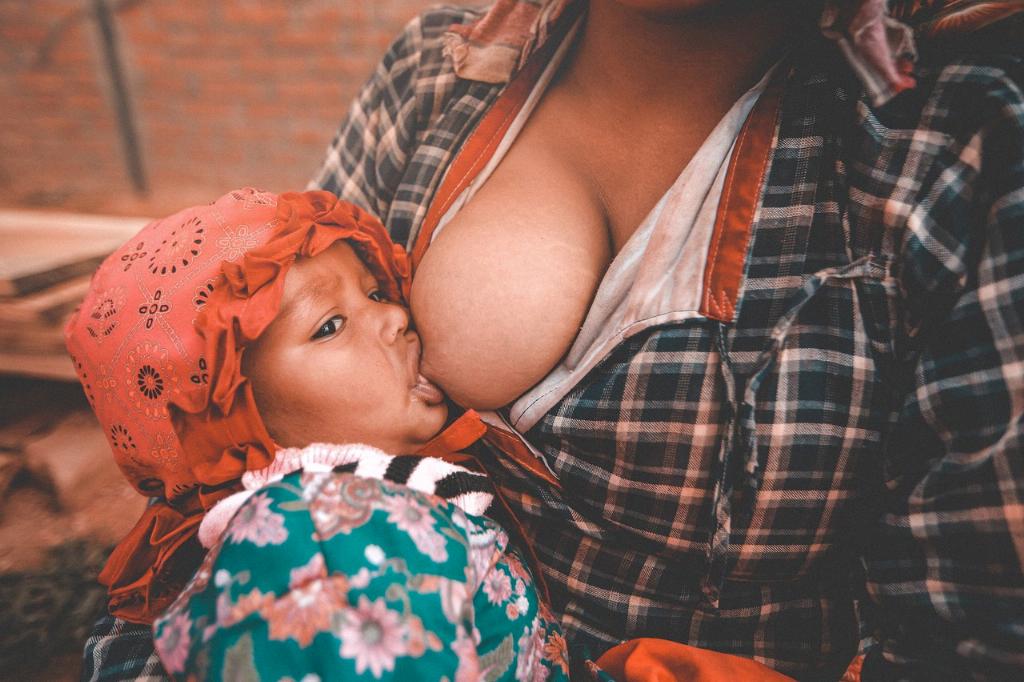When it comes to caring for a newborn, there are so many questions that new parents have, and a common one is whether or not you can feed a newborn while swaddled. Swaddling a baby can be a wonderful way to help them feel secure and comfortable, but when it comes to feeding time, there are some important considerations to keep in mind.
Overheating Concerns
One of the key reasons why it’s not recommended to feed a newborn while swaddled is the risk of overheating. Swaddling can prevent proper air circulation, leading to the baby becoming too hot, which is dangerous and can increase the risk of sudden infant death syndrome (SIDS).
Impact on Reflexes
Swaddling can also impact some of the baby’s natural reflexes, including the rooting reflex, which is the instinct babies have to turn towards a nipple when their cheek is touched. This reflex is important during breastfeeding, as it helps the baby latch on properly and nurse effectively.
Freedom of Movement
During breastfeeding, having the baby swaddled can limit their ability to move and position themselves comfortably. Babies naturally squirm and adjust their bodies during feeding to find the best latch, so swaddling may hinder their ability to do so.
Comfort and Connection
Feeding time is not just about providing nourishment, but also about building a bond with your baby. Keeping your baby unswaddled during feeding allows for skin-to-skin contact, eye contact, and overall better interaction, which can strengthen the parent-child relationship.
Observing Hunger Cues
When a baby is swaddled, it may be harder to observe their hunger cues and feeding patterns. Babies communicate their hunger in various ways, such as rooting, sucking on their hands, or making feeding noises. These cues may be harder to detect if the baby is swaddled.
Preventing Overfeeding
Overfeeding a baby can lead to discomfort, gas, and other digestive issues. When a baby is unswaddled during feeding, they are more likely to be able to control the feeding process by indicating when they are full and signaling to stop, preventing overfeeding.
Safety Considerations
Feeding a swaddled baby also poses safety risks, as there is a higher likelihood of the baby accidentally covering their face with the swaddle or getting entangled in it while feeding. Keeping the baby unswaddled reduces these risks and ensures a safer feeding environment.
Encouraging Independence
Allowing your baby to have some freedom of movement during feeding encourages their independence and self-regulation. It helps them develop their feeding skills, learn to self-soothe, and become more aware of their bodies and hunger signals.
Feeding Positions
Unswaddling your baby during feeding also allows for more flexibility in choosing different feeding positions. Being able to adjust the baby’s position and angle can help alleviate any discomfort or feeding issues and improve the overall feeding experience for both the baby and the parent.
Creating a Relaxed Environment
Feeding time should be a calm and relaxed experience for both the baby and the parent. By keeping the baby unswaddled during feeding, you create a more conducive environment for bonding, communication, and ensuring that both baby and parent are comfortable and at ease.
Final Thoughts
In conclusion, while swaddling can be beneficial for newborns in many situations, it’s best to avoid swaddling during feeding times. Allowing your baby the freedom to move, communicate their needs, and interact with you during feeding can lead to a more positive and effective feeding experience, fostering a strong bond between parent and child.

